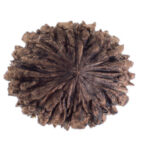Indian cooking can feel intimidating at first. Spices everywhere, ingredients with names you can’t pronounce, and those recipes that call for “a pinch” of something you have no clue how much is enough. I remember the first time I tried making dal at home—I thought “a pinch of turmeric” meant a tablespoon. It did not. My dal turned neon yellow and tasted like sunshine. Lesson learned.
Rice and Lentils: The Heart of Every Meal
If you’re new to Indian cooking, start with rice and lentils. Basmati rice is your friend—it smells amazing, cooks fluffy if you don’t mess it up, and pairs with just about everything. Lentils are basically the backbone of home-cooked meals. Toor dal, masoor dal, and moong dal are the most common, and learning to cook them properly is a game-changer. Pro tip: rinse lentils a couple of times before cooking; trust me, it makes a huge difference. I once skipped this step and ended up with foamy, messy soup that nobody wanted to eat.
Spices: The Magical, Confusing Little Jars
Ah, spices. Indian cooking is basically tiny jars of magic. Cumin, coriander, turmeric, mustard seeds, garam masala—the list goes on. If you’re starting out, don’t feel like you need everything at once. Start simple: cumin, coriander, turmeric, chili powder, and salt. Once you’re comfortable, slowly add more. I made the mistake of buying 20 different spices before I even learned how to use the first five. My spice rack looked like a tiny rainbow explosion, but I barely touched half of them.
Ghee and Oils: Don’t Underestimate the Basics
Ghee is like the VIP of Indian cooking. Butter made from clarified milk, it adds richness and flavor that’s hard to replace. Vegetable oil works too, of course, but if you can swing ghee, do it. I once tried making tadka (tempering spices) in plain oil, and my curry tasted… meh. The next day I tried the same recipe with ghee and suddenly felt like I had unlocked a secret level of cooking.
Onions, Garlic, and Ginger: The Holy Trinity
Almost every Indian dish starts with these three. Chop, sauté, and you’re halfway to dinner. Tip from experience: always have some pre-chopped garlic and ginger in the freezer. It saves lives on busy days. I once tried to chop ginger at 9 p.m. after work—my fingers were sore, and I almost cried from the smell. Lesson learned: prep ahead.
Tomatoes and Dairy: Balancing Flavors
Tomatoes are the acid, yogurt or cream is the mellow. Most curries have some balance of these, and knowing how to combine them will save your taste buds. I once added yogurt directly to a hot pan without tempering, and it curdled instantly. I looked like a total amateur. Temper the yogurt first with a little hot liquid next time, and life is better.
Frozen Veggies and Paneer: The Quick Fixes
Not everything has to be fresh. Frozen spinach, peas, or mixed veggies can save you on days when shopping feels impossible. Paneer is a mild cheese that holds up well in curries, and it’s amazing for beginners because it doesn’t crumble under heat. I once tried to make paneer from scratch, and it ended up like rubber. Totally edible, but chewy in a weird way. Store-bought works perfectly.
Herbs: Cilantro Is Your Best Friend
Cilantro adds freshness to almost every Indian dish. Chop it right before serving, and suddenly your food looks and tastes way better. I used to sprinkle it while cooking, and the flavor got lost. Fresh is key. Mint works too if you want a slightly different vibe, but cilantro is the MVP.
Staples Storage: Don’t Panic
Most Indian staples—spices, lentils, rice—keep for months if stored properly. Use airtight containers. I learned this after my cumin somehow got invaded by tiny bugs. Not fun. Once you organize a small corner of your kitchen with these basics, cooking becomes less scary.
Final Thoughts: Start Simple, Learn Slowly
Indian cooking can be complicated, but with these staples, you can start small. Cook a simple dal, make some rice, and try your hand at a basic vegetable curry. Don’t worry about perfection; even if your first attempt isn’t Instagram-worthy, it’ll taste like home eventually. Personally, the messiest meals have been the most fun to make—and sometimes the tastiest too.










